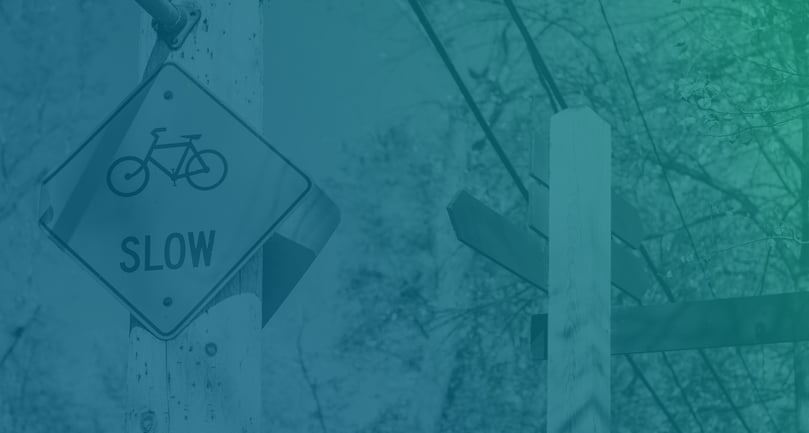7 questions top ISP support teams ask when troubleshooting home network issues

As we’ve mentioned before, home network-related issues like slow internet speeds and buffering video are notoriously difficult to troubleshoot and diagnose.
This is because there are a variety of factors that can affect WiFi connectivity, and unless support agents have useful insights into the home network, it isn’t always possible to get to the root cause of the problem.
With a diagnostics and troubleshooting solution like RouteThis, agents have access to the necessary information right at the beginning of the support call, so this isn’t an issue. But if your support team doesn’t have that visibility into the home network, where do you start?
1. Are all router and modem cables connected properly?
Contrary to popular belief, incorrectly connected modem and router cables don’t just result in no internet. They are often the cause of slow speeds, buffering video or other connectivity-related issues.
So naturally, this should actually be one of the first questions technical support agents ask customers who call in about network-related issues.
If your customer isn’t sure whether they’ve connected a cable properly, tools like LiveView can help you see what they see—and identify any incorrectly connected cables.
2. What's the make and model of the router? How old is the router?
If a router is older than five years, it probably can’t handle the demands of today’s users. Old routers just don’t have the necessary protocols or max speeds to support online gaming, Zoom sessions, or streaming music and 4K videos. Plus, like most things, the quality of routers tends to diminish over time.
If you know all wires and cables are properly connected, the next step should be to ask the customer about the make, model, and age of their router to verify it can keep up with their demands.
3. Are there any range extenders on the network? Is the customer connected to one?
Range extenders can be beautiful things. As the name suggests, they help extend the WiFi signal from the router to parts of the house that are too far for the router to cover. However, extenders on the network can also cause unforeseen connectivity issues, often due to a poor connection between the router and the extender itself.
If that connection is poor, any devices connected to the range extender will also experience issues.
Like routers, there are a few red flags to look for when it comes to range extenders, including age, price, and specifications.
4. Are all devices on the network experiencing connection issues?
Sometimes, a customer will call in complaining about slow speeds—but their speed test results will show nothing out of the ordinary.
In those cases, the issue likely isn’t their home network, but the device itself. At this point, the next step would be to determine if any other devices on the network are experiencing similar connection issues. If they’re not, then this specific device is most likely the problem.
5. How far away is the router? Are there any walls or other obstructions in the way?
Distance from the router matters. If a device is too far away from the router, it will inevitably begin to experience connection issues like slow speeds. And most customers won’t realize when a device is too far. They don’t know that wireless routers typically only cover between 150 and 300 feet—roughly the size of a single-family dwelling.
On top of that, physical obstructions (like walls) between the router and the customer’s device can also shorten this coverage area even more.
6. Is anyone else using the WiFi right now?
Customers often call in complaining that their internet speeds are less than what they pay for and have the speed test results to prove it. But what they don’t understand is that their internet speeds aren’t one-speed-fits-all.
They don’t realize that their speed gets divided up among all the devices using their network, so the number of devices can affect their speed test results. When only a few people are using it, everything is great and traffic flows smoothly; but when too many devices are in use at once, this leads to a ton of issues, including slow internet and buffering video.
7. How many other networks are on the channel?
In the 2.4GHz band, there are only three non-overlapping channels: 1, 6, and 11. That means every 2.4GHz network in an area will be fighting for space on one of these channels, often leading to slow speeds and interference.
Unfortunately, much like the bandwidth problem outlined above, many customers don’t even know that the channel they’re connected to can have an effect on their internet speeds. So it may be necessary to walk them through accessing their router config pages and switching to a less congested channel.
Routers and range extenders are tricky, it could just be the device, distance is key, watch out for other devices and networks
Identifying the root cause of home network/WiFi-related issues is relatively simple if you ask the right questions. With the help of our current ISP partners, we’ve narrowed it down to seven.
As helpful as they are, though, they’re not always enough to find and fix the problem.
Without proper insight into customers’ home networks, it still takes a lot of time and customer effort to get the required answers. Add in non-technical customers, and you’ve got a recipe for a long, frustrating call at best or an unresolved issue at worst.
At RouteThis, our aim is to make technical support calls as efficient, effective, and painless for customers and agents as possible. We deliver the answers to these questions directly to the agent at the beginning of the call, so there’s no need to go back and forth with the customer.
